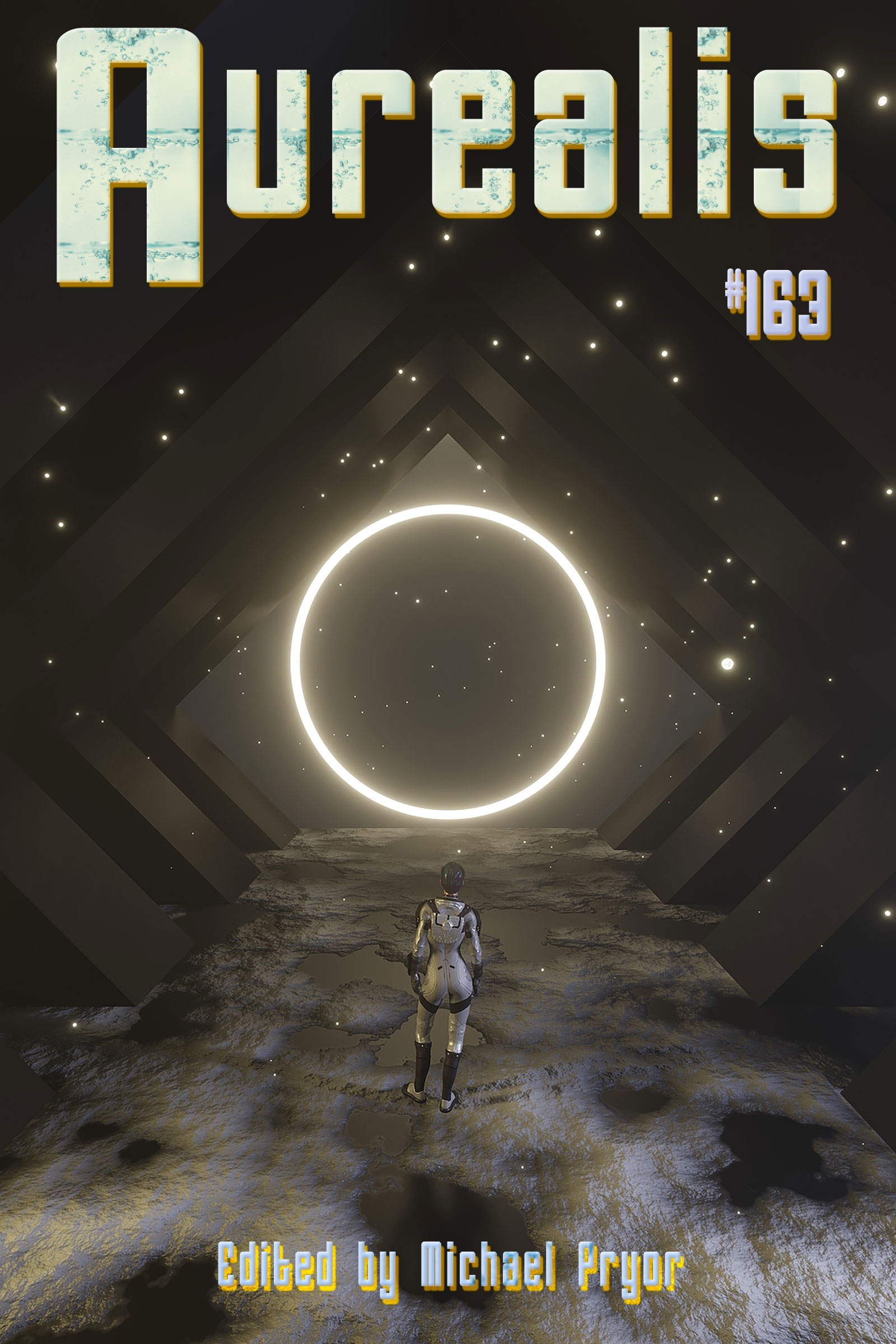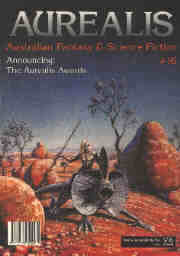Aurealis #163
$3.99
Aurealis #163 has outstanding fiction from Ephiny Gale, Baden M Chant and Andrew Knighton. Our stunning illustrations come from Leah Clementson, Peter Allert and Chris Catlin. Our top non-fiction is by Lachlan Walter, David Ellrod and Ani White. And, of course, we have our absorbing Reviews section, worth the price of admittance on its own.
Aurealis, we see further with each and every issue.
- From the Cloud — Michael Pryor
- The Most Powerful Witch in Witchville — Ephiny Gale
- Love is an Attack Missile Strike — Baden M Chant
- My Ancestor's Bones Lie in This Bay — Andrew Knighton
- Mad Max and the Uselessness of the Australian Lone Wolf Protagonist — Lachlan Walter
- Asimov: Faith and Foundation — David F Ellrod Sr
- Crimes of the Future: Biotech Nightmare and Purity Myth — Ani White
Australian Science Fiction for Young Adults and Children is a fertile area today, but many titles published in the past are unjustly forgotten. Here are a few that deserve to be brought back to life.
- Displaced Person (1981)—the late, lamented Lee Harding. What happens when you start to vanish along with everyone else? Identity, sense of self, sense of place. An Australian classic.
- Deucalion (1995)—Brian Caswell. Colonialism, intolerance, understanding, in an SF scenario. Thought-provoking.
- The Broken Wheel (1996)—Kerry Greenwood. Yes, that Kerry Greenwood. Post apocalyptic tribalism. Gritty.
- Singing the Dogstar Blues (1998)—Alison Goodman. Time travel, aliens, and some funky harmonica playing. Cool.
- Omega (2000)—Christine Harris. In space, which way does death lie? Wondrous.
- Eye to Eye (1997)—Catherine Jinks. Machines can think. Can they feel? Challenging.
- Galax-Arena (1995)—Gillian Rubinstein. Spaceships, aliens, captivity, what’s not to like?
- Halfway Across the Galaxy and Turn Left (1985)—Robin Klein. Funny SF. There’s not enough of it.
- Ziggurat (1997)—Ivan Southall. A mysterious disappearance and another mode of existence. Profound.
- Parkland (1995)—Victor Kelleher. Enigmatic aliens, human zoos, outsiders.
All the best from the cloud!
Michael Pryor
From The Most Powerful Witch in Witchville by Ephiny Gale:
In the thickest part of the forest stretches a stone wall as tall as its tallest tree. Inside the wall is Witchville.
From Love is an Attack Missile Strike by Baden M Chant:
1,235 milliseconds into the boost phase you emerge.
To begin, you observe only yourself. This is the fundamental stuff of consciousness—to be actor and audience to your own internal drama.
From My Ancestor's Bones Lie in This Bay by Andrew Knighton:
Blue waters swell unstoppably into the sawblade curve of the bay, the power of the ocean penetrating the land. For a moment, there’s purity in that view. Chunks of ice rise and fall, so white they glow. Even the snow, painted across the clifftops by a divine artist’s brush, lies matt and muted by comparison.
From Mad Max and the Uselessness of the Australian Lone Wolf Protagonist by Lachlan Walter:
Despite its birth in 19th-century Europe and Great Britain—Mary’s Shelley’s Frankenstein (1818) and The Last Man (1826); Jules Vernes’ Journey to the Centre of the Earth (1864) and From the Earth to the Moon (1865); H G Wells’ The Time Machine (1895) and The War of the Worlds (1898)—science fiction wasn’t codified as a self-conscious genre until 1926, when American writer Hugo Gernsback founded Amazing Stories magazine.
From Asimov: Faith and Foundation by David F Ellrod Sr:
Isaac Asimov was one of the ‘Big Three’ science fiction writers of the 20th century (alongside Robert Heinlein and Arthur C Clarke), and one of the biggest proponents of science and reason you are likely to find. Where belief was concerned, he was also a man of seeming contradictions—a secular Jew who professed he knew more about Christianity than his own faith tradition, and a self-described atheist who wrote a two-volume Biblical commentary. How did he reconcile these seeming contradictions within himself, and how were they expressed in his writing?
From Crimes of the Future: Biotech Nightmare and Purity Myth by Ani White:
Crimes of the Future (2022) sees legendary director David Cronenberg return to body horror, a subgenre he defined for two decades, then abandoned for two more (in brief: body horror films are notable for surreal bodily transformation effects).




